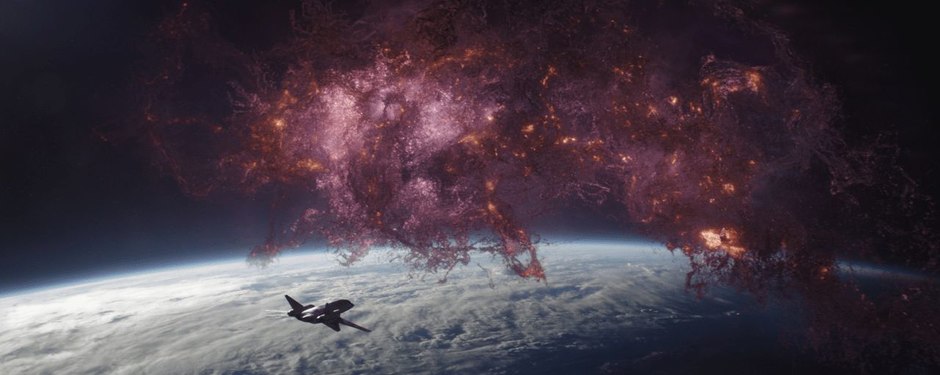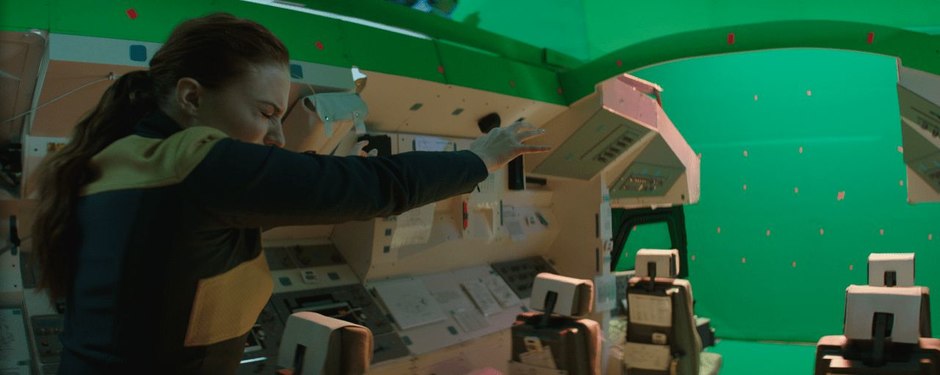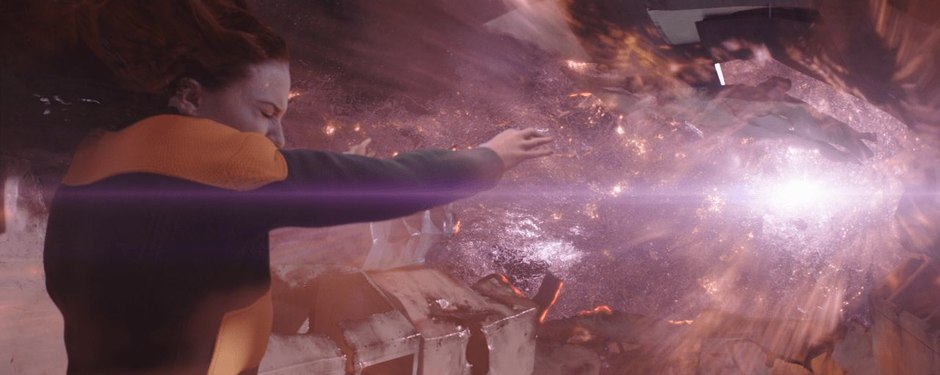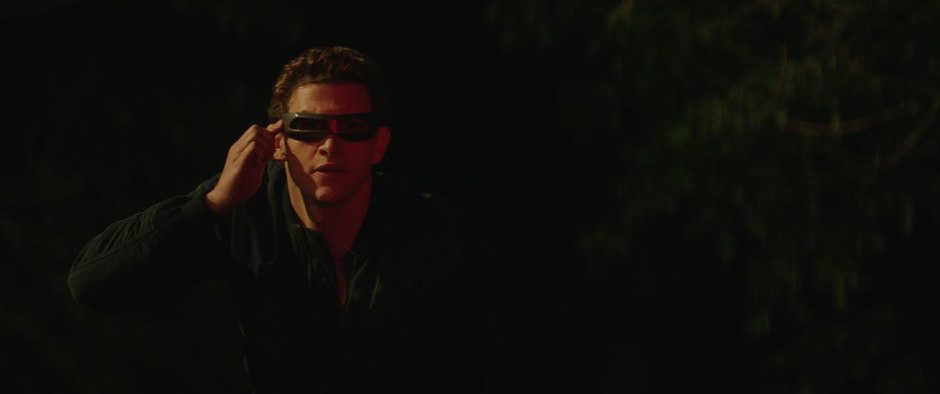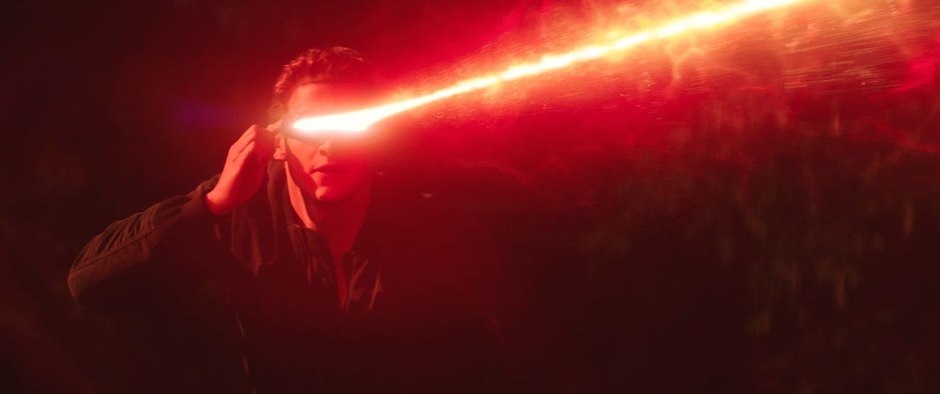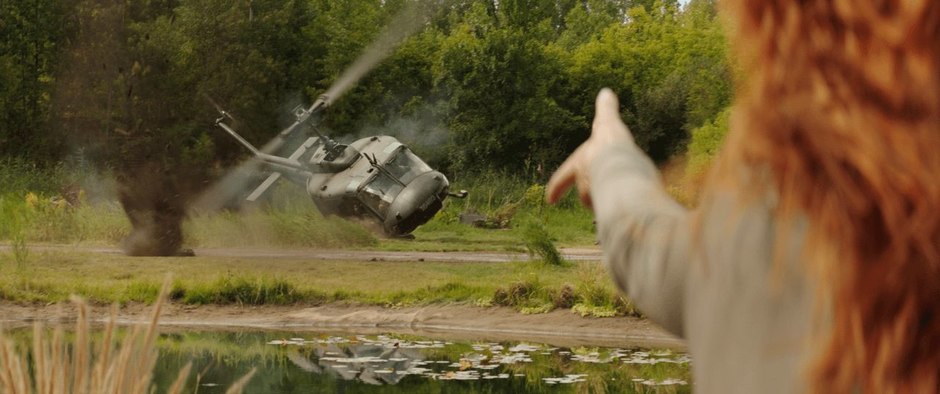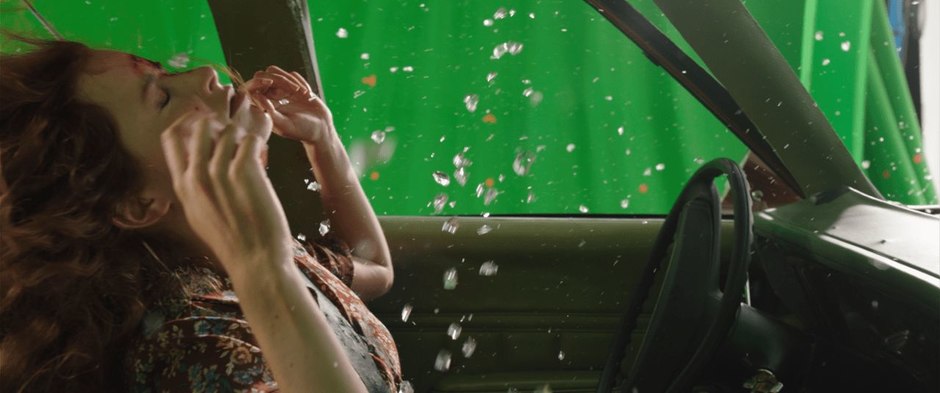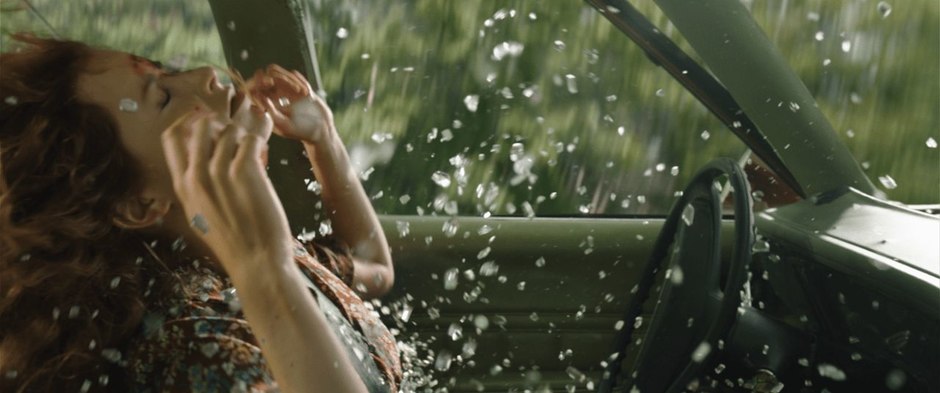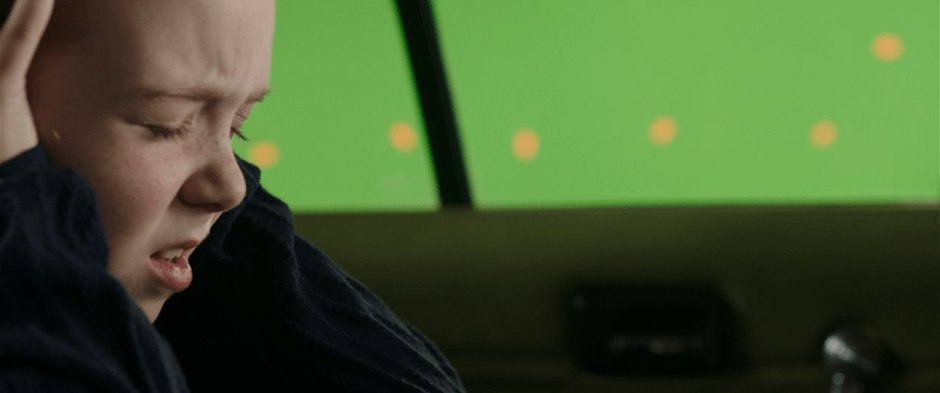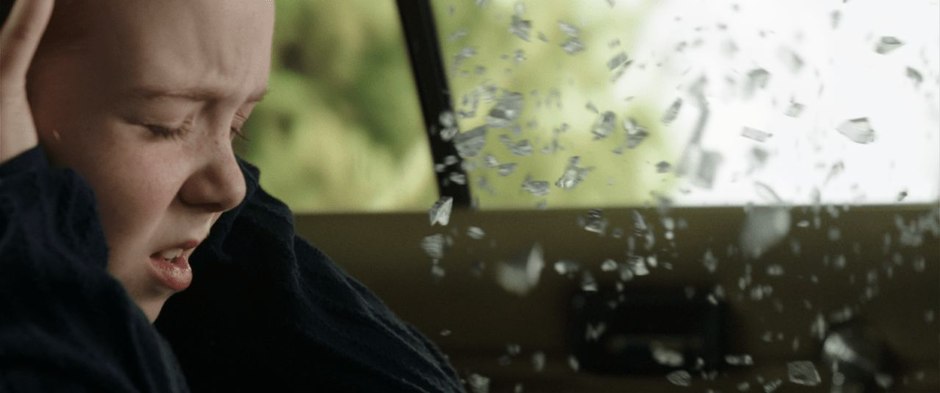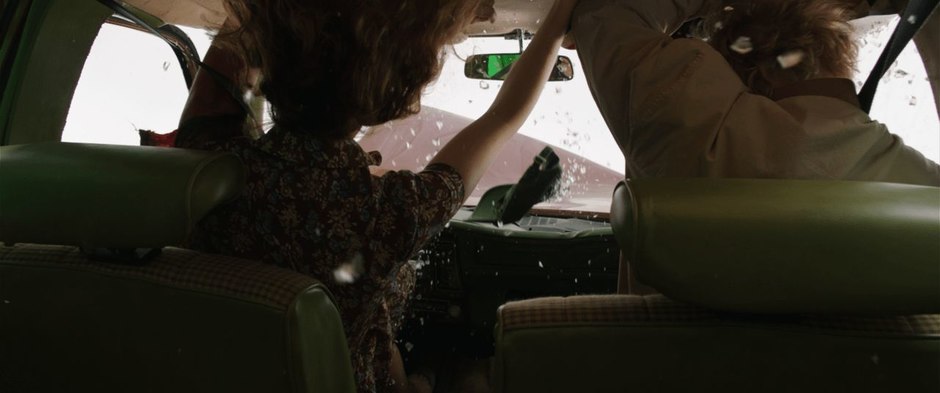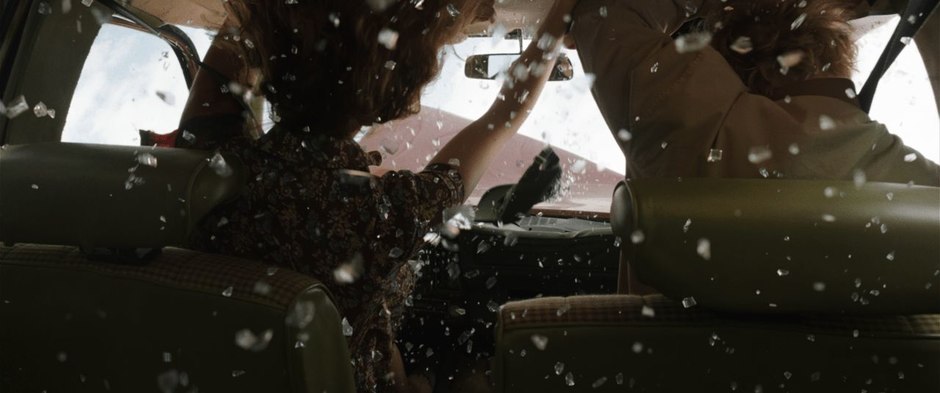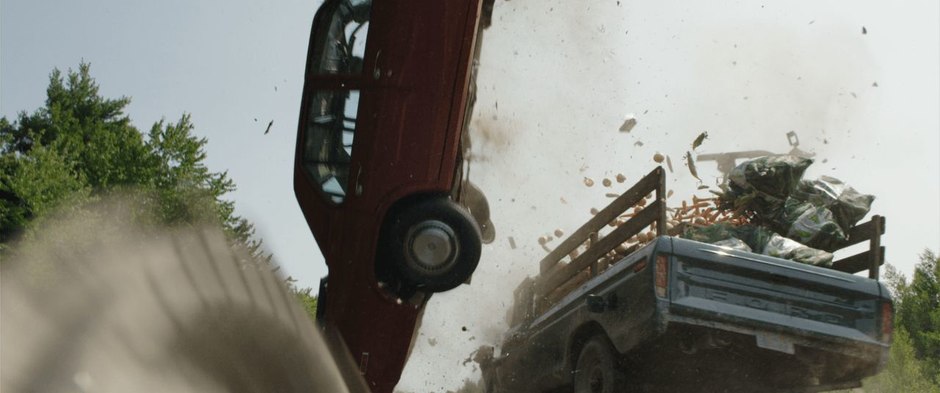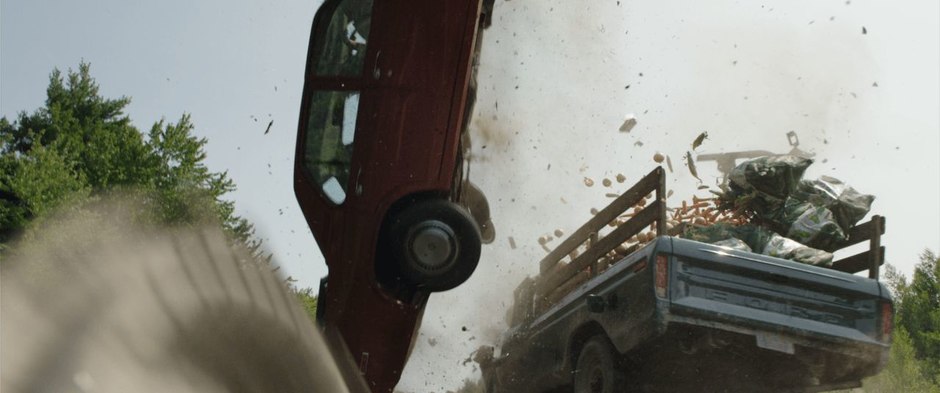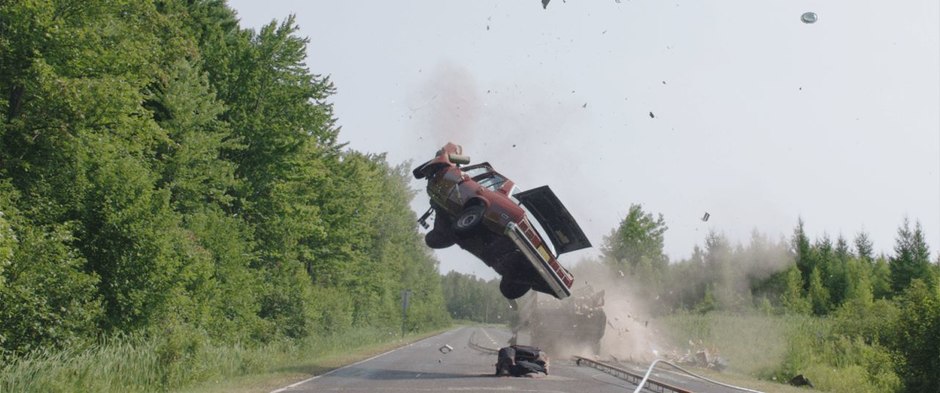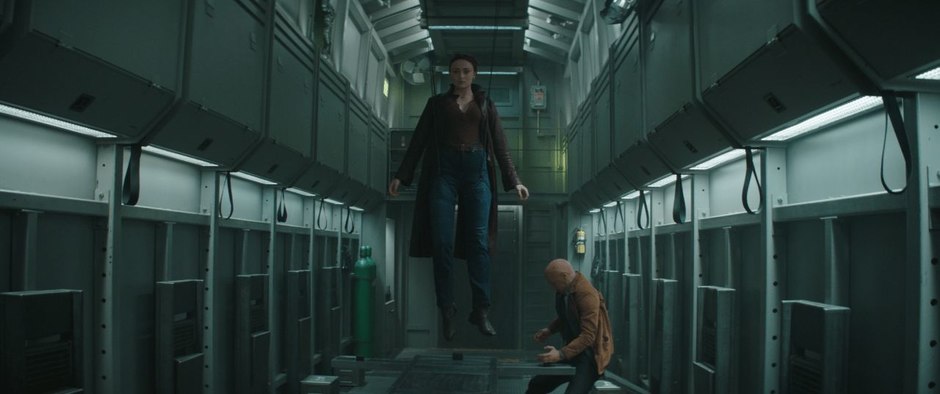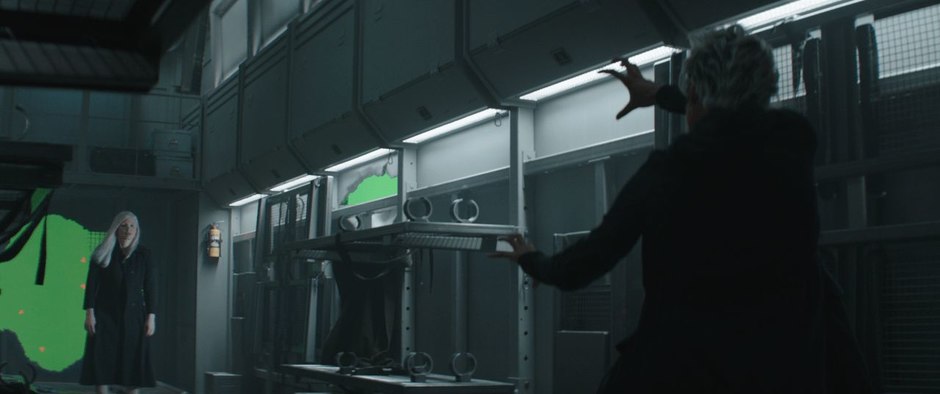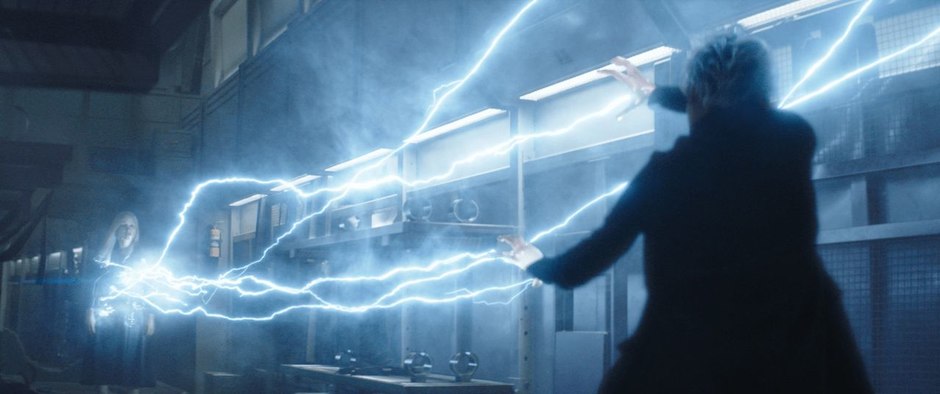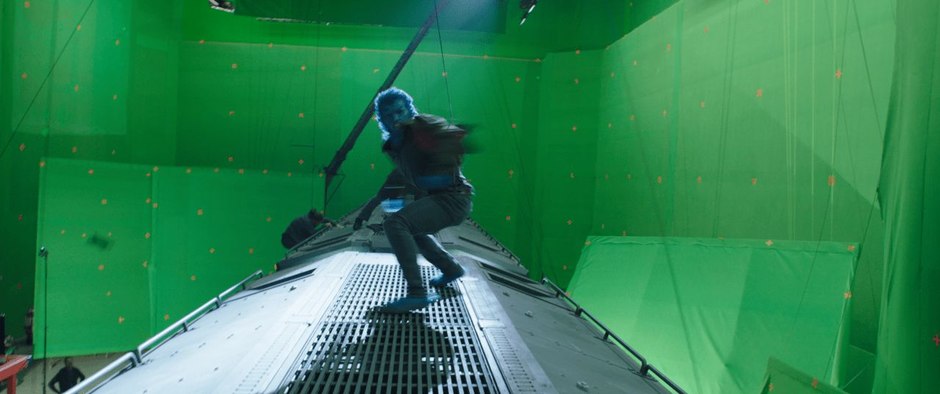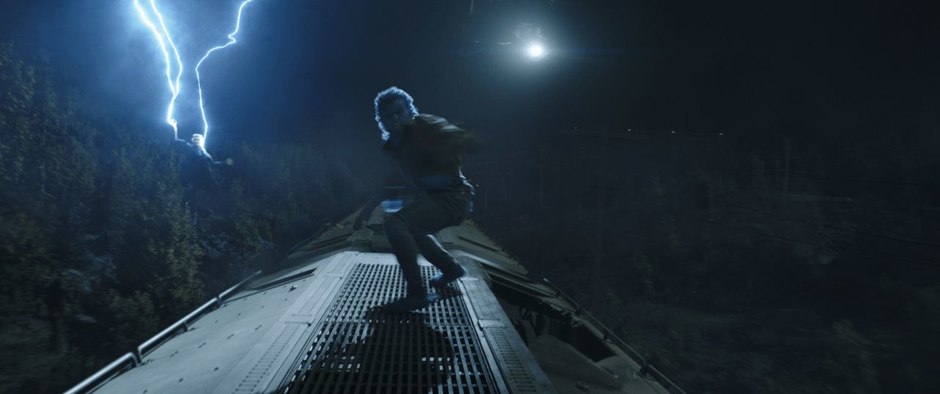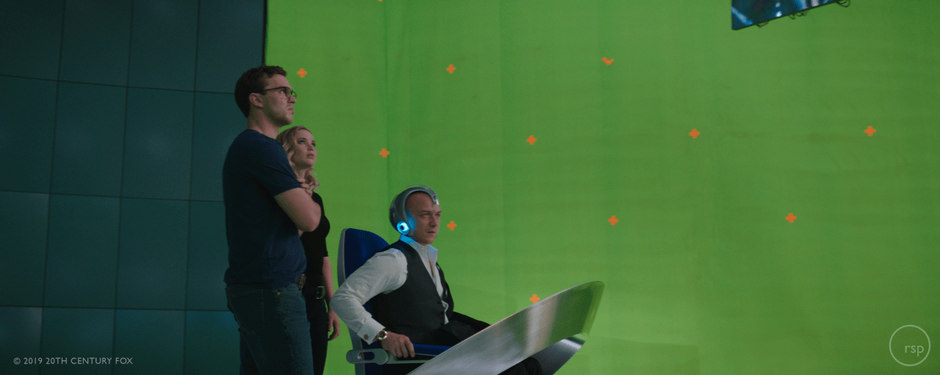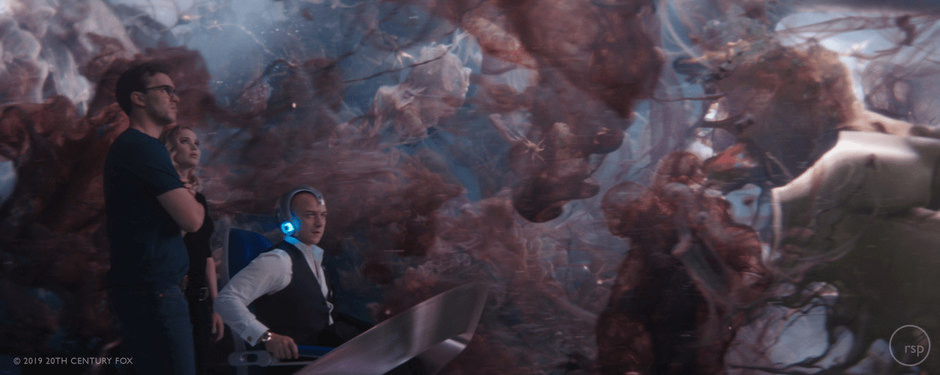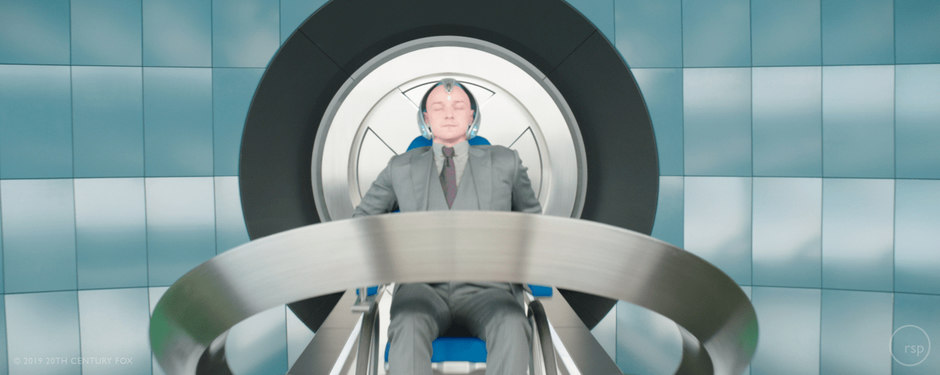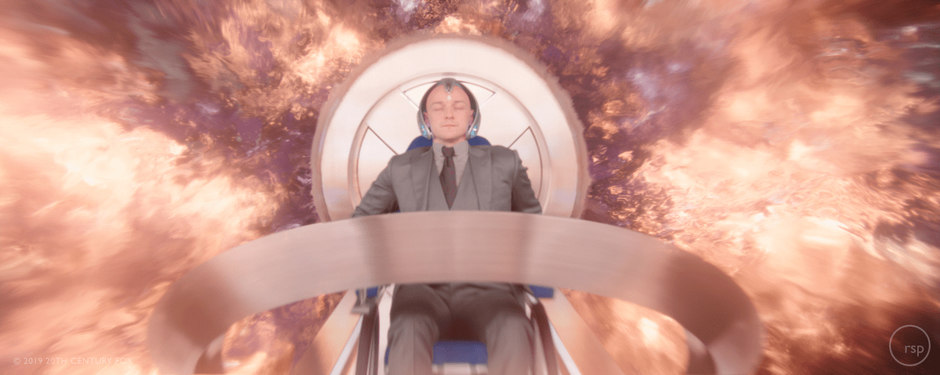Entering the Cosmic Realm of ‘Dark Phoenix’
VFX supervisor Phil Brennan describes the making of Jean Grey’s cosmically altered telekinesis, her childhood car crash, an enhanced Cerebro and the 3rd act prison train.

13 years after writing the script for X-Men: The Last Stand, where the telepathic Jean Grey gets possessed by a cosmic force that turns her into the most powerful adversary ever faced by Charles Xavier and his mutant superheroes, Simon Kinberg revisits that storyline, this time as director, in Dark Phoenix, the final installment of the X-Men franchise to be produced by 20th Century Fox prior it’s historic purchase by Disney. “We wanted to take this one in a different direction and go a lot closer to the comic book storyline,” Oscar-nominated visual effects supervisor Phil Brennan (Snow White and the Huntsman) explains. “But it’s a movie, so there are compromises. Simon Kinberg wanted to have the spectacle people expect [from the X-Men franchise] but also be much more grounded and dramatic. We were constantly trying to find the right balance.”
1350 out of the 1700 shots in Dark Phoenix have a visual effects component, with contributions coming from main vendor MPC as well as Soho VFX, Scanline VFX, Rodeo FX, Rising Sun Pictures and MELS Studio. “There was certainly a lot of sharing of assets, like environments and digital doubles, but we didn’t have a huge amount of shared shots,” notes Brennan, who changed the Phoenix Force look as well as Jean Grey’s (Sophie Turner) transformation into Dark Phoenix over the course of the production. “Our starting point was fiery and as time went on, it went in a much more cosmic direction.” Brennan studied Hubble Space Telescope imagery as reference, and eventually incorporated liquid components into the cosmic simulation. “We realized early on that the affect Phoenix Force has on Jean had to have a huge range of levels, from the subtle hint to a massive thing that affects her and the stuff around her,” he continues. “A lot of our challenges were in finding the right level, working that into the scenes, and trying to make sure even when it was taken far we didn’t completely eliminate Sophie’s performance.”
Jean Grey has a vast range of supernatural abilities that include telekinesis and telepathy, which become amplified by the Phoenix Force. “From her childhood to young adult years, Jean has been learning, with a lot of help from Charles Xavier [James McAvoy], to control her powers,” Brennan shares. “She’s gotten to a place where she’s comfortable with them and feels in control. Suddenly, because of this event that happens in space, those powers are now magnified many times and Jean can’t control them again because they’re so much bigger than anything she has ever dealt with before. We did need to make sure there was a nod to what those powers used to be.” Grey is also capable of molecular reconstruction. “What you’re doing is pulling apart an environment which is either real or looks photoreal,” he reveals. “That always helps to ground the effect. It was a huge amount of particle effects and those are simulations that require numerous of iterations.”
“One of the things that we did early on with Simon was study all of the past X-Men movies and pick the effects that we all liked,” Brennan states. “For instance, the signature sequence for Nightcrawler [Kodi Smit-McPhee] occurs inside the White House in X-Men 2. We looked at what we thought were the best aspects of that prior work but then tried to use today’s technology to take the effects much further. These days there is so much computing power, and better software and algorithms that we can do a lot more with.” Nightcrawler bampfs (the effect that occurs when he teleports from one spot to another) appear throughout and in situations that have never been seen before. “We have it in space in Zero-g and also in Quicksilver Time so you get to see it happen in super slow motion,” he adds. “In some of the more recent movies, like X-Men: Apocalypse, the bampfs were quick puffs of smoke. We wanted to get away from that and go back to a much more trailing effect that had been done in the past.”
“We tried to take Scott Summers/Cyclops [Tye Sheridan] beams further to make them more believable, grittier, and integrate better with the environment, which we can do with today’s technology, whereas maybe 10 to 15 years ago, we couldn’t,” Brennan describes. “If he blows away a piece of metal, then that metal gets heated up red hot and pieces spark off. We tried to get into the details of what would happen if you physically shot a beam of plasma at something.” Storm (Alexandra Shipp) gets more screen time in Dark Phoenix. According to Brennan, “We did try to take her effects a lot further. We use a lot of lightning with Storm, but tried to give her a few other things as well. She had various wind and ice effects. Storm could always control the weather. This is 10 years after the last movie so she’s a lot better at it.”
In one scene, Jean Grey pulls down a military helicopter, with a broken rotary shaft narrowly missing Magneto (Michael Fassbender). “The helicopter was an interesting collaboration between special effects and visual effects,” Brennan remarks. “Cameron Waldbauer [The Revenant], who did our special effects, came up with this amazing rig that allowed us to puppeteer a partial helicopter. We took the blades off and engine out. It was almost completely repeatable and could be done in a safe enough way that we could have actors and stunt people around and inside it. For visual effects we put the blades on the helicopter, modified the lighting, and made some grass and dust fly around.” Fassbender’s startled reaction to his near-death encounter with the shaft that didn’t exist in the live-action shoot is priceless. “That’s because he’s Michael Fassbender and is really good!” Brennan shares. “We did have some special effects like mortars that go off to give a path, so he has an eyeline of where this thing is supposed to be.”
Every Quicksilver (Evan Peters) sequence is unique throughout the X-Men franchise. “You have to start from the ground up, break it down, and work out how to shoot every shot and which parts are CG and real,” Brennan says. “The interesting thing about the space scene was you can usually tell when you’re in Quicksilver Time because everything moves so slowly. But, when you’re in zero gravity, everything is generally moving slowly to start with. We had to find things like gas escaping, so visually, you could tell the moment when you switched from regular time to Quicksilver Time. We also played with the speed, so sometimes we’re in Quicksilver Time and sometimes we’re coming back more towards real-time and seeing Quicksilver move quickly. We bounce back and forth between those two scenarios to spice things up a bit.”
A pivotal moment in the film is the opening sequence, which showcases Jean Grey causing a fatal car crash. Rodeo FX handled the visual effects work, with CG supervisor Alexandre Ménard a key member of the team. “The accident was shot onset and we cleaned up the plates and enhanced the crash by adding flying props and glass for the windows,” he states. In the crash, an energy bubble surrounds and protects young Jean (Summer Fontana) which needed to seem real and not too magical. “For this, we created the concept and had a bit of back and forth with the client, ultimately deciding to downplay it by having the simulation of the glass debris hit an invisible field to tell the story,” Ménard explains. “We also recreated the interior of the car using 3D scans. Plates shot indoors and outdoors had to be matched. We worked significantly on simulating the glass debris, for the car had been stripped of its windows and windshield to be rigged. The environment was mostly a matte painting.” Digital doubles were made of the Grey Family for the external shots as the car in the plate was empty. Ménard is pleased with how the crash scene came together. “We made full CG doubles, based on LiDAR scans, including hair and clothing,” he notes. “The result is really great. It’s a beautiful sequence.”
Originally, the third act was to take place in outer space, but was entirely reshot to happen on a prison train. “It made our final delivery schedule tighter than what we expected because there was a lot of new stuff to do,” Brennan reveals. “We did use previs for quite a few sections of the movie but found with Brian Smrz, our second unit director, and Simon, they felt more comfortable with storyboards. So, we did a lot of storyboard animatics rather than getting into precise shot to shot previs.”
Cerebro (a mind device used to detect mutants) was taken in a different direction than in previous films. “Jean gets to the point quickly where Charles Xavier [James McAvoy] can’t get into her mind anymore like he has always been able to do,” Brennan notes. “He has to use Cerebro to get inside of Jean’s mind to find out what’s wrong with her. There is this whole weird inky world full of memories of Jean’s past. We shot a bunch of footage to use as memories but a lot of that was building this weird inky world and integrating those memories in an inky breaking apart way. We didn’t want to do a conventional ‘here are a bunch of neurons inside of the brain.’ We had a nod to that but mostly we wanted to make it a beautiful unusual world. There is a story point there that as you go through the sequence, things become more chaotic.”
In addition, new lighting technology was used for scenes involving Cerebro. “We have a big scene in Cerebro which involved a lot of interactive lighting LED arrays,” Brennan says. “We generated footage that was an approximation of what the final footage was going to look like, played that back and used that to light the actors and set so that in a shiny environment, a lot of those reflections that you get were real.”
As might be expected for a film of this scale, many fully CG shots needed. “For most of them, we had some kind of reference to build off even if we ended up just using it as a lighting reference to base the CG on,” Brennan shares. “There was a fair amount of location shooting but it was predominantly backlot and soundstages. We still used a good amount of greenscreen and bluescreen.” Extensive CG hair simulations were needed as well. “We had a lot of CG hair in this movie, mostly on Sophie but also on Jessica Chastain,” Brennan says. “It’s still is a tough thing. We had three different vendors that had to deal with Jean’s hair. We probably have between 200 to 300 shots in the movie that have CG hair, quite often close-up. That was a lot of work.” Simulations had a major role to play in the VFX work, especially towards the end of the film. “We had some shots that are 1000 plus frames long that involve heavy simulations of liquid, gas, vapour, particles, and all of those things combined,” Brennan concludes. “I still love the train sequence and finale that happens afterwards.”
By: Trevor Hogg
Source: https://www.awn.com/

熱門頭條新聞
- OIAF2025
- Once Human Launching Three New Scenarios & Mobile Version In 2025
- ‘Memoir of A Snail’ to Open Anima Festival 2025
- New STALCRAFT: X Game Mode Revealed in New Trailer Showcased at The Game Awards
- Can CD Projekt Recapture the Magic?
- Meridiem announces physical edition of the paw-some Cats on Duty for PlayStation 5
- Chart a Course for Puzzle Adventure in Tile Tales: Pirate!
- Czech Game of the Year
